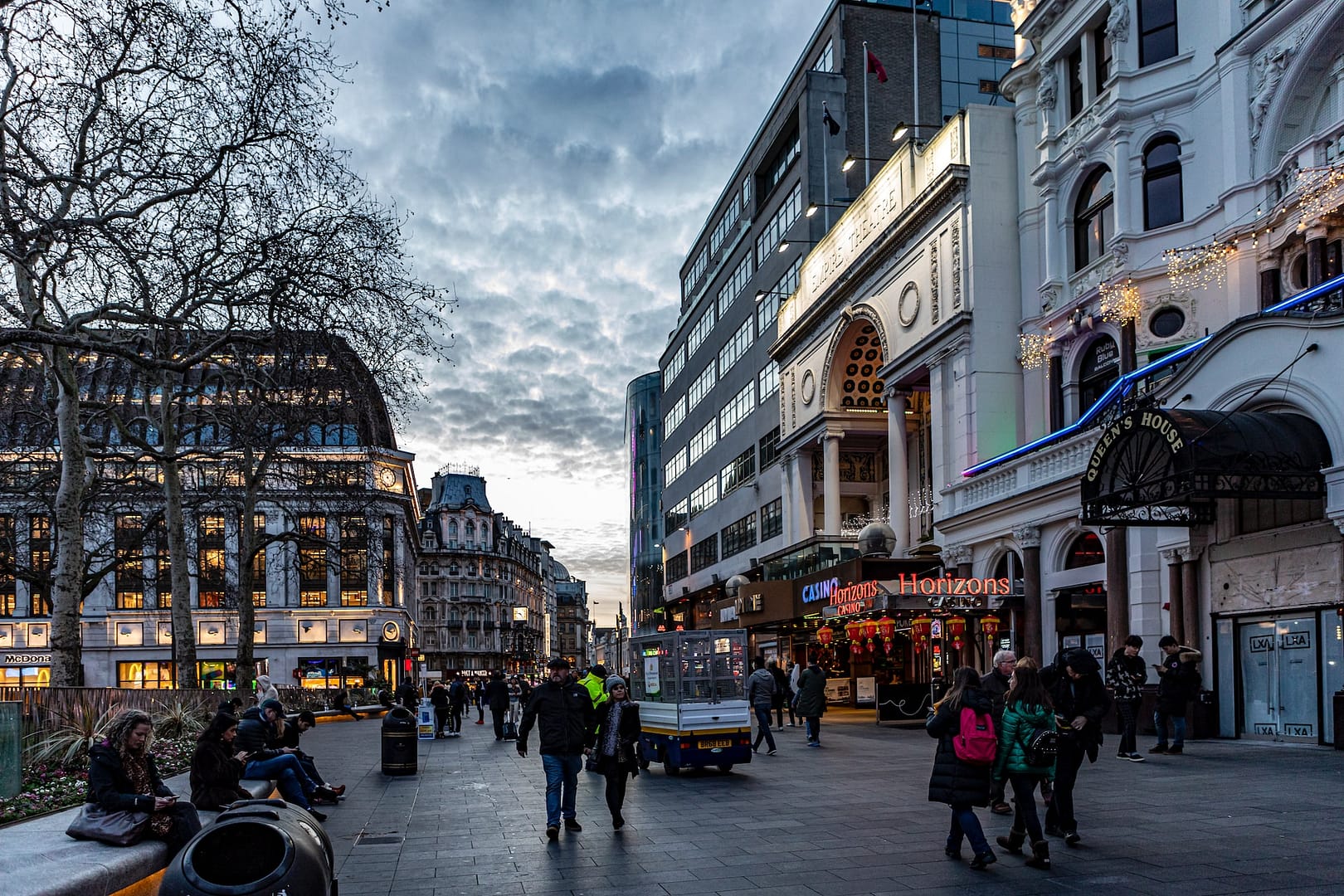The question of whether there is sufficient pedestrian-friendly infrastructure in the United Kingdom is one that has gained increasing attention in recent years. With urbanisation on the rise and a growing emphasis on sustainable transportation options, the state of pedestrian infrastructure has become a crucial aspect of modern city planning. In this article, we will explore the concept of pedestrian-friendly infrastructure, the new pedestrian law in the UK, and examine the current state of affairs in the country. We also explore your options for making a road traffic accident claim.
What is Pedestrian Friendly Infrastructure?
Before delving into the specifics of the situation in the UK, let’s first understand what pedestrian-friendly infrastructure entails. At its core, pedestrian-friendly infrastructure refers to the design and implementation of elements in urban areas that prioritise the safety, convenience, and comfort of pedestrians.
Pedestrian Walkways: One of the primary components of pedestrian-friendly infrastructure is the presence of well-maintained and clearly marked pedestrian walkways. These paths offer safe routes for individuals on foot, separating them from vehicular traffic and minimising the risk of accidents.
Crosswalks and Traffic Signals: Adequate crosswalks and traffic signals are essential for pedestrians to navigate busy streets safely. These features allow pedestrians to cross roads at designated points and ensure that vehicles yield the right of way when needed.
Sidewalks: The presence of wide and well-maintained sidewalks is crucial for pedestrian comfort. These paved pathways provide space for pedestrians to walk, jog, or even sit and enjoy the surroundings without feeling cramped or unsafe.
Accessibility Features: Pedestrian-friendly infrastructure also includes features like ramps, tactile paving, and pedestrian crossings equipped with audible signals to ensure that individuals with disabilities can move about independently.
Amenities: Street furniture, such as benches, shelters, and waste bins, contributes to a more pleasant pedestrian experience, encouraging people to walk rather than rely on other forms of transportation.
In essence, pedestrian-friendly infrastructure seeks to create an environment where walking is not only safe but also enjoyable. This approach aligns with the broader goal of promoting sustainable transportation options and reducing the reliance on cars, thereby addressing issues like congestion and air pollution.
The New Pedestrian Law in the UK
To assess whether there is enough pedestrian-friendly infrastructure in the UK, it’s essential to consider recent legal developments. In 2020, the UK introduced a significant piece of legislation aimed at enhancing pedestrian safety and accessibility – the “Pedestrian Priority Traffic Signal” law.
What is the Pedestrian Priority Traffic Signal Law?
This new law, which came into effect in December 2020, gives pedestrians more control at pedestrian crossings. It allows pedestrians to activate a “green person” signal at certain crossings, similar to the way motorists can trigger a green light by approaching a sensor.
Previously, pedestrians had to wait for the signal to change automatically, often leading to frustration and unnecessary delays. With this law, pedestrians can request a green signal, ensuring that they have a designated time to cross the road safely.
This legislative change reflects a growing recognition of the importance of pedestrian-friendly infrastructure in the UK. By empowering pedestrians with greater control over traffic signals, the law aims to make walking a more convenient and attractive mode of transportation.
The Current State of Pedestrian-Friendly Infrastructure in the UK
Now that we understand the concept of pedestrian-friendly infrastructure and the recent legal developments, let’s take a closer look at the current state of affairs in the United Kingdom.
Urban vs. Rural Areas
The adequacy of pedestrian-friendly infrastructure varies significantly between urban and rural areas in the UK. In major cities like London, Manchester, and Birmingham, there has been a concerted effort to create pedestrian-friendly spaces. These cities have invested in extensive networks of sidewalks, pedestrianised zones, and pedestrian-friendly amenities. For example, London’s “Mini-Holland” projects have transformed several boroughs, making them more walkable and cyclist-friendly.
In contrast, rural areas often face challenges due to limited resources and lower population density. While scenic countryside walks abound, the lack of dedicated pedestrian infrastructure can be a barrier for those who want to explore these areas on foot. However, some rural communities have initiated local projects to improve pedestrian access and safety.
Safety Concerns
Safety remains a paramount concern for pedestrians in the UK. Although the new Pedestrian Priority Traffic Signal law is a step in the right direction, accidents and near misses still occur. A study conducted by the Royal Society for the Prevention of Accidents (RoSPA) found that pedestrian accidents accounted for a significant portion of road traffic injuries and fatalities.
To address safety concerns, cities like London have introduced innovative measures, such as Low Traffic Neighbourhoods (LTNs) and Vision Zero initiatives. LTNs aim to reduce traffic volumes in residential areas, making streets safer for pedestrians. Vision Zero sets the ambitious goal of eliminating all road deaths and serious injuries by implementing safer road designs and improved pedestrian facilities.
Accessibility
Ensuring accessibility for all is a crucial aspect of pedestrian-friendly infrastructure. The UK has made progress in this regard, with the Disability Discrimination Act (DDA) and later the Equality Act 2010 mandating accessibility features in public spaces.
Tactile paving, audible signals at crossings, and dropped curbs have become common sights in cities, making it easier for individuals with disabilities to navigate the urban environment independently. However, challenges remain, particularly in older urban areas where retrofitting accessibility features can be costly and logistically complex.
The Role of Active Transportation
Promoting active transportation, which includes walking and cycling, is a key component of creating pedestrian-friendly infrastructure. In recent years, there has been a growing emphasis on encouraging people to walk or cycle for short trips instead of relying on cars.
The introduction of bike-sharing schemes in cities like London and Manchester has made cycling more accessible to the public. Additionally, initiatives like the “Streetspace for London” program have created temporary cycling and walking infrastructure during the COVID-19 pandemic, further emphasising the importance of active transportation.
Making a Road Traffic Accident Claim with National Claims
At National Claims, we understand that even with the best pedestrian-friendly infrastructure and safety measures in place, accidents can still happen. If you’ve been involved in a road traffic accident as a pedestrian in the UK and believe you deserve compensation, we’re here to help.
Contact National Claims
The first step in making a road traffic accident claim is to get in touch with our experienced team at National Claims. You can reach us through our website or by phone. Our dedicated staff will guide you through the claims process and answer any initial questions you may have.
Initial Consultation
Once you contact us, we’ll schedule an initial consultation to gather all the necessary details about your accident. This includes information about the incident, your injuries, and any evidence you may have, such as witness statements or photographs.
Assessment
Our legal experts will assess the merits of your claim based on the information you provide during the initial consultation. We’ll determine if there’s a valid case for seeking compensation and advise you on the potential outcomes.

Conclusion
In conclusion, while the United Kingdom has made significant strides in improving pedestrian-friendly infrastructure, there is still work to be done. The introduction of the Pedestrian Priority Traffic Signal law and the implementation of measures like LTNs and Vision Zero demonstrate a commitment to pedestrian safety and accessibility.
To further enhance pedestrian-friendly infrastructure in the UK, several actions can be considered:
Investment: Continued investment in pedestrian infrastructure, especially in rural areas, is essential. This includes funding for sidewalks, crosswalks, and amenities that encourage walking.
Education: Public awareness campaigns can educate both pedestrians and motorists about their responsibilities and rights at pedestrian crossings, helping reduce accidents and conflicts.
Technology: The integration of smart technologies, such as pedestrian detection systems and real-time traffic management, can enhance safety and convenience for pedestrians.
Community Involvement: Engaging local communities in the planning and design of pedestrian-friendly infrastructure ensures that it meets the specific needs of each area.
Monitoring and Evaluation: Regular assessments of pedestrian infrastructure’s effectiveness and safety are crucial for making informed improvements.
In conclusion, while the UK has made progress in creating pedestrian-friendly infrastructure, the journey towards a more walkable and accessible environment continues. By prioritising pedestrian needs and investing in infrastructure, the UK can make significant strides towards ensuring that there is indeed enough pedestrian-friendly infrastructure throughout the country. With ongoing efforts and collaboration between communities, policymakers, and urban planners, the UK can create a future where walking is not just a mode of transportation but a way of life, supported by safe and inviting pedestrian-friendly infrastructure. If you’ve been involved in a road traffic accident as a pedestrian, National Claims is here to provide the legal support you need to seek compensation and justice.
Contact us today and get started with your claim with the help from one of our claims specialists.
Click below to see why we are one of the most trusted claims management companies in the UK.

We’re proud of our excellent customer reviews
We thrive on delivering exceptional service and ensuring our clients’ satisfaction. Don’t just take our word for it. Check out some of our independent reviews to see what our clients have to say.
Excellent

This firm is excellent, they sorted out my car pay out and injury claim very fast, they always communicate with you all the time.

My accident case was dealt with confidence and with great result of the outcome, especially James kept me informed all the time.

I was very impressed at the way my inquiry was treated. I was listened to attentively and everything I needed to know was explained to me.






